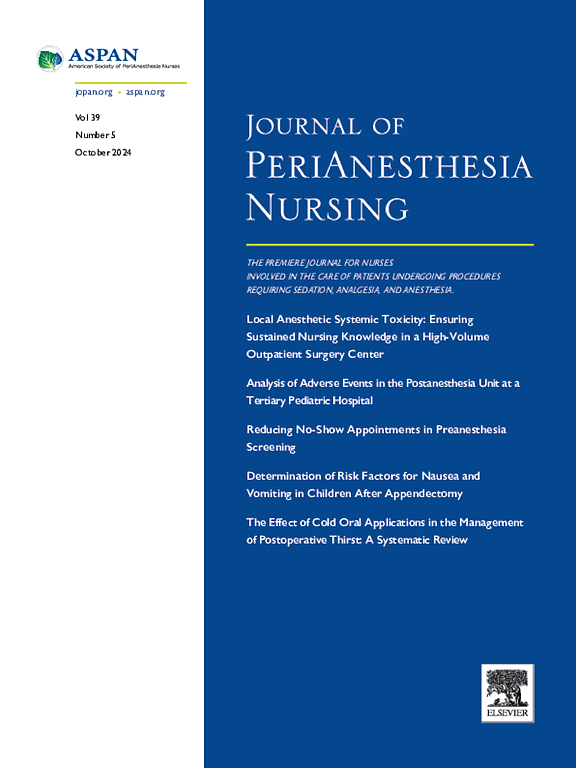Assessment of Ergonomic Risks in Surgical Unit Nurses and Factors Influencing These Risks: A Cross-sectional Study
IF 2
4区 医学
Q2 NURSING
引用次数: 0
Abstract
Purpose
The study aimed to assess the ergonomic risks perceived by nurses working in surgical units in terms of biomechanical, environmental, organizational and psychosocial factors, and to identify the factors influencing these risks.
Design
This study employed descriptive and cross-sectional design.
Methods
The study was conducted with 165 nurses working in surgical units of 1 private and 1 university hospital. Data were collected using the Personal Information Form and the Questionnaire Survey of Ergonomic Risks. The scales were administered between March 15, 2023, and April 15, 2023. The researchers gathered data through face-to-face interactions by visiting the nurses in their work environments. Multiple linear regression analysis was used to explore the predictors of ergonomic risks.
Findings
Hospital type was found to be a positive predictor of biomechanical factors (B = 14.308, P < .001), and organizational and psychosocial factors (B = 7.255, P = .048). Working in the operating room unit (B = −8.891, P = .020) was identified as a negative predictor, whereas night shifts (B = 14.963, P = .04) and shift work (B = 9.211, P = .018) were identified as positive predictors of organizational and psychosocial factors.
Conclusions
The results of the study indicated that surgical nurses face high biomechanical, environmental, and organizational and psychosocial risk factors. Working in a university hospital is a risk factor with regard to biomechanical, and organizational and psychosocial factors. Night shifts and shift work are risk factors for organizational and psychosocial factors. Working in the operating room demonstrates a lower risk in terms of organizational and psychosocial factors.
外科护士人体工程学风险评估及其影响因素:一项横断面研究。
目的:探讨外科护士在生物力学、环境、组织和社会心理等方面感受到的人机工程学风险,并探讨影响这些风险的因素。设计:本研究采用描述性和横断面设计。方法:对1所私立医院和1所大学医院外科科室的165名护士进行调查。数据收集采用《个人信息表》和《人体工程学风险问卷调查》。这些量表在2023年3月15日至2023年4月15日之间进行。研究人员通过访问护士的工作环境,通过面对面的互动收集数据。采用多元线性回归分析探讨人体工程学风险的预测因素。结果:医院类型是生物力学因素的正向预测因子(B = 14.308, P)。结论:研究结果表明外科护士面临较高的生物力学、环境、组织和社会心理风险因素。在大学医院工作是生物力学、组织和社会心理因素方面的一个风险因素。夜班和轮班工作是组织和社会心理因素的危险因素。在手术室工作在组织和社会心理因素方面显示出较低的风险。
本文章由计算机程序翻译,如有差异,请以英文原文为准。
求助全文
约1分钟内获得全文
求助全文
来源期刊

Journal of Perianesthesia Nursing
NURSING-
CiteScore
2.20
自引率
17.60%
发文量
279
审稿时长
90 days
期刊介绍:
The Journal of PeriAnesthesia Nursing provides original, peer-reviewed research for a primary audience that includes nurses in perianesthesia settings, including ambulatory surgery, preadmission testing, postanesthesia care (Phases I and II), extended observation, and pain management. The Journal provides a forum for sharing professional knowledge and experience relating to management, ethics, legislation, research, and other aspects of perianesthesia nursing.
 求助内容:
求助内容: 应助结果提醒方式:
应助结果提醒方式:


